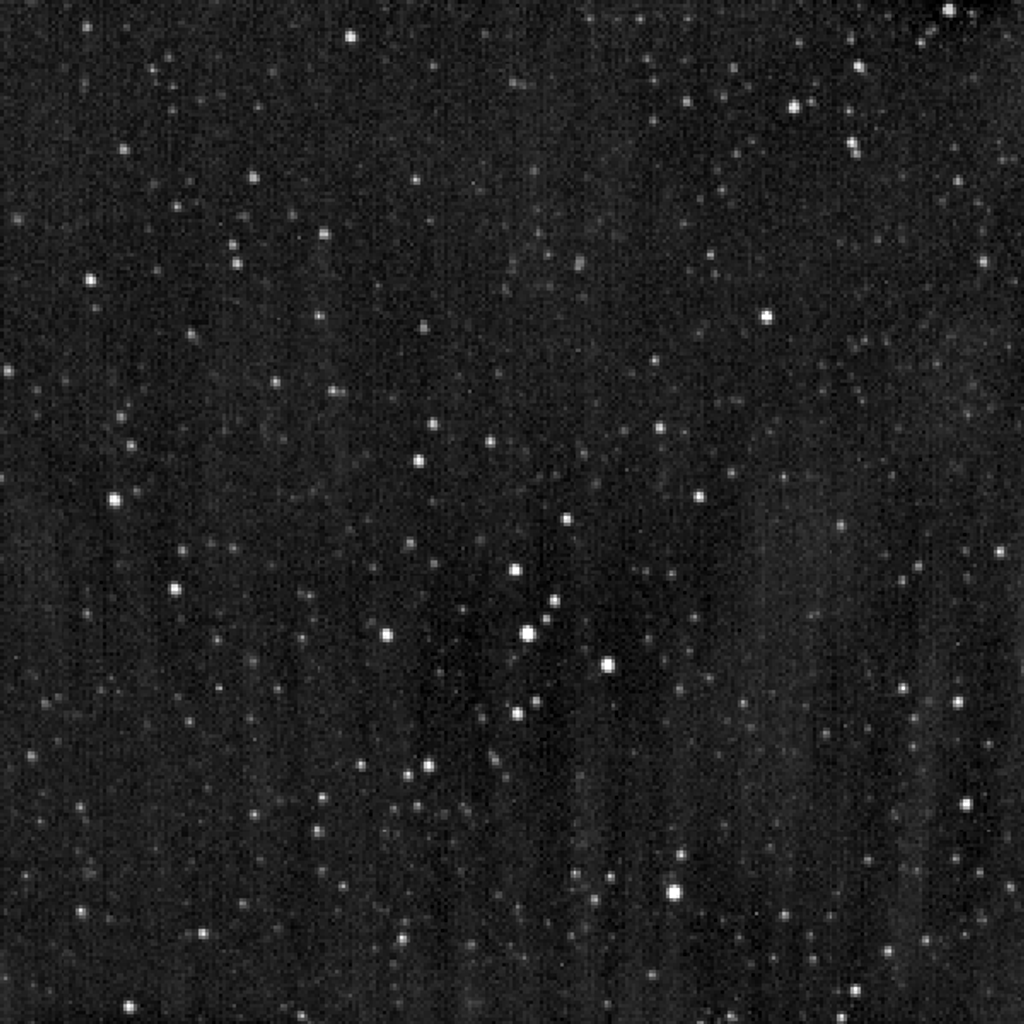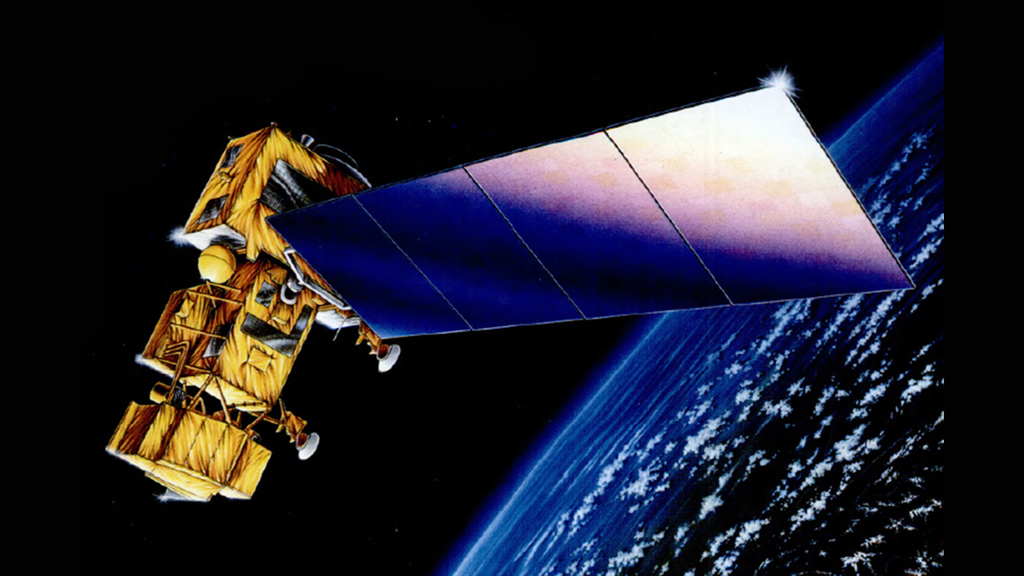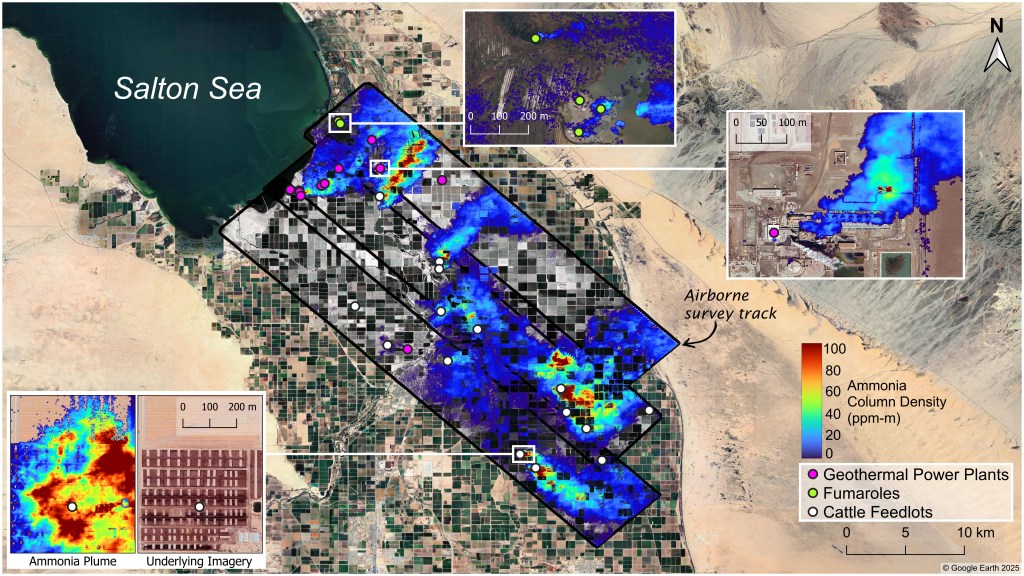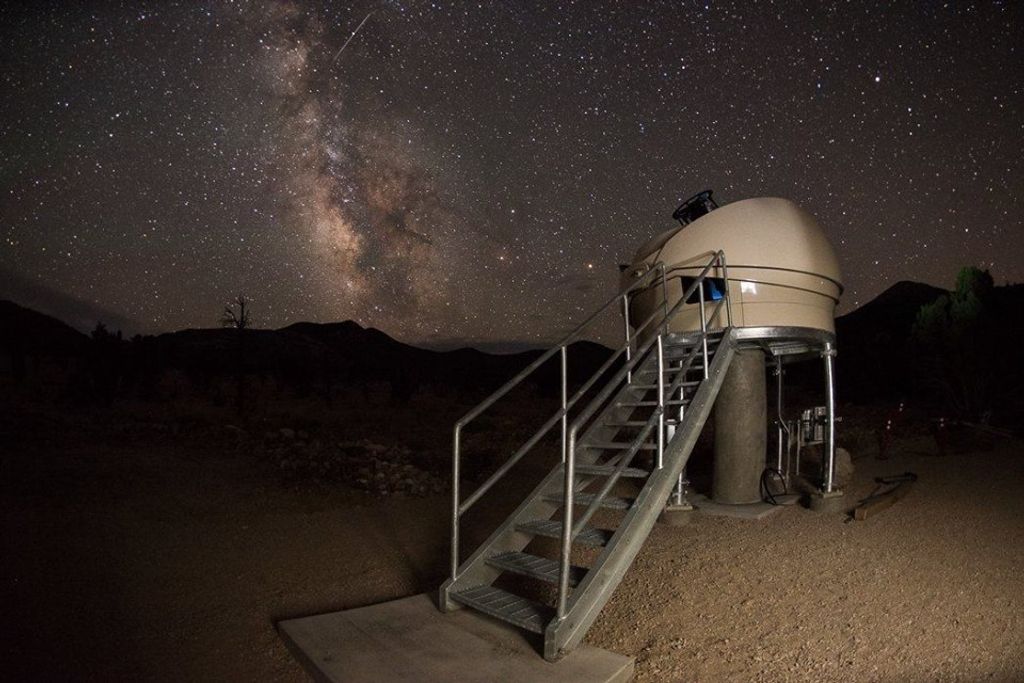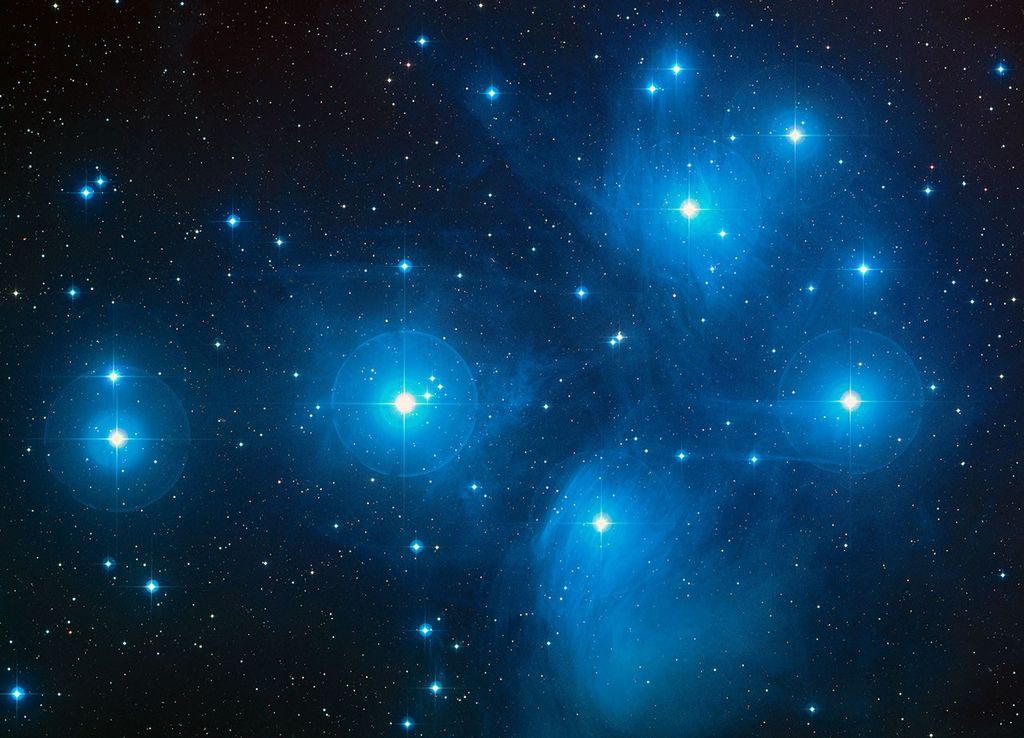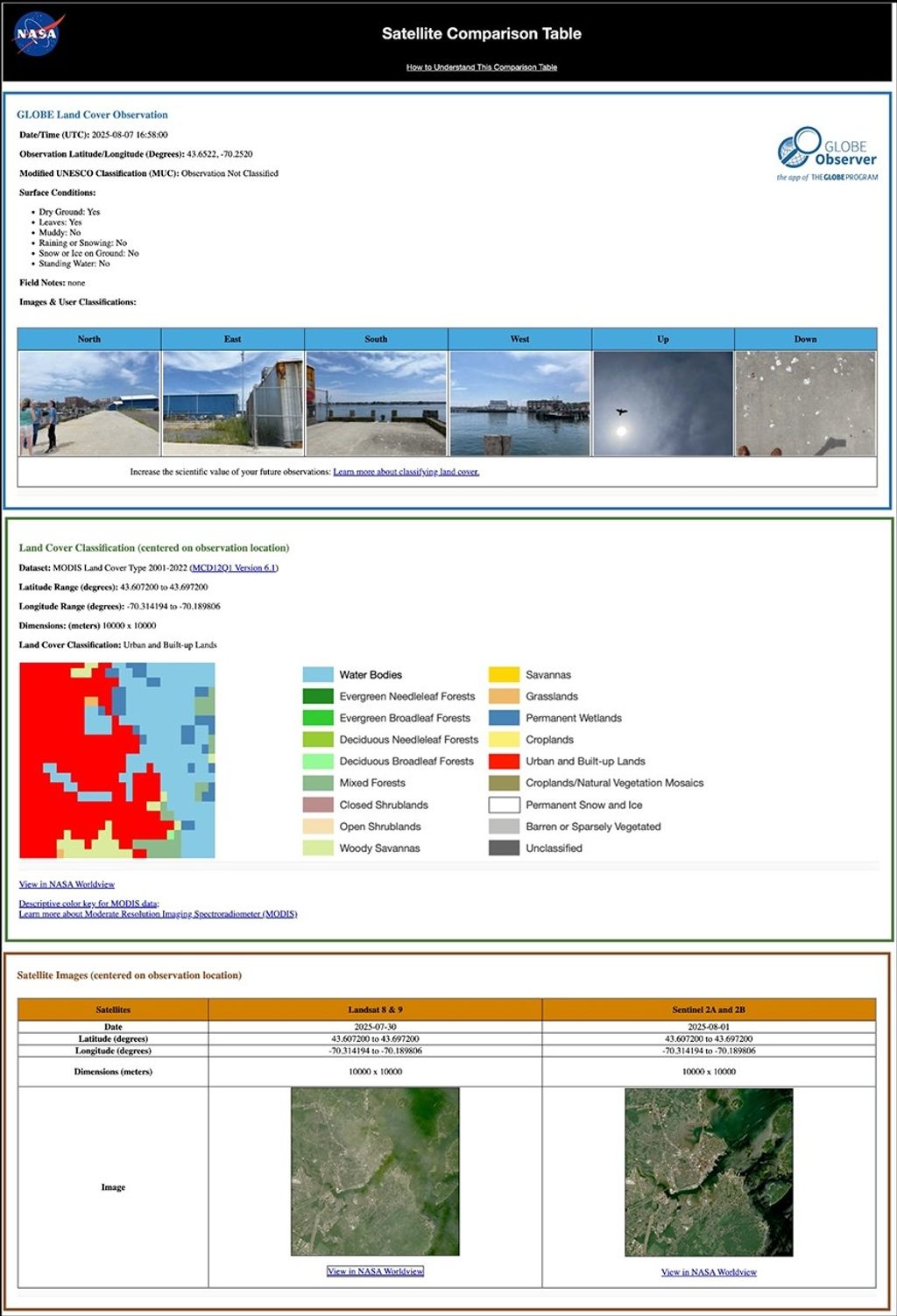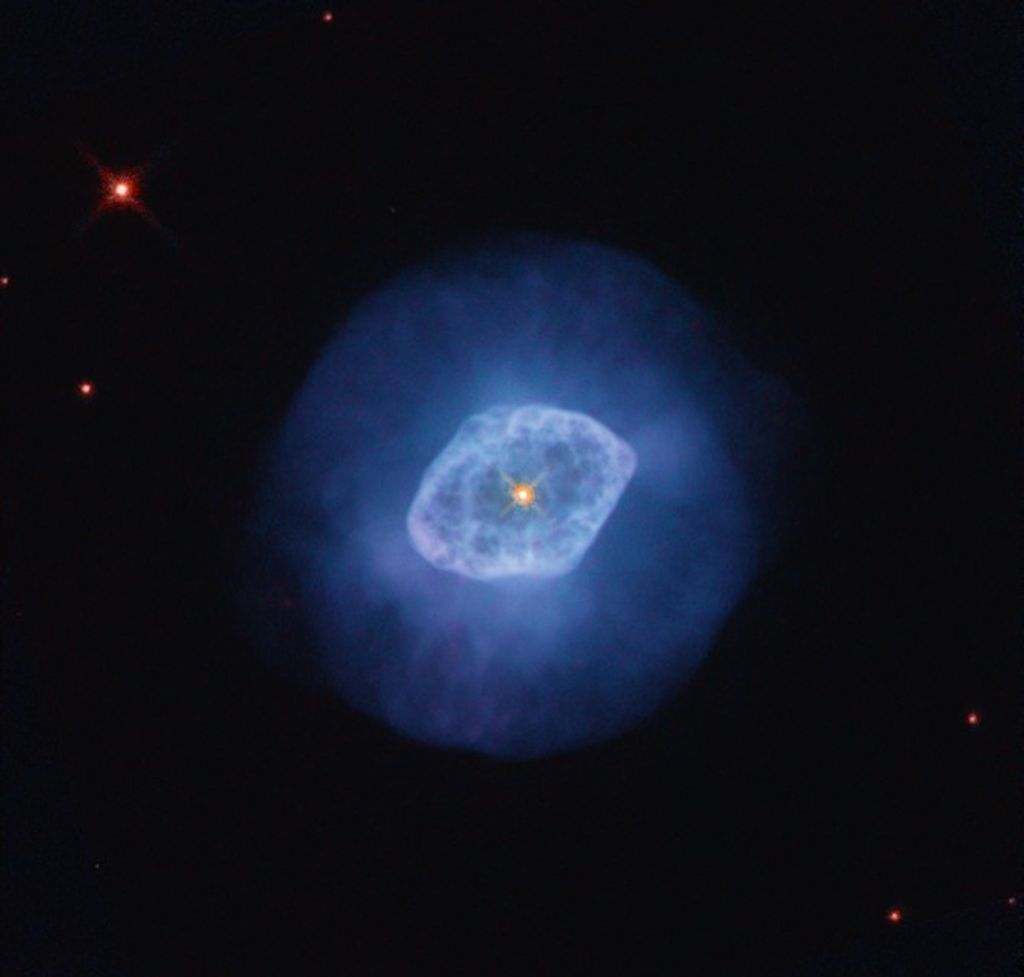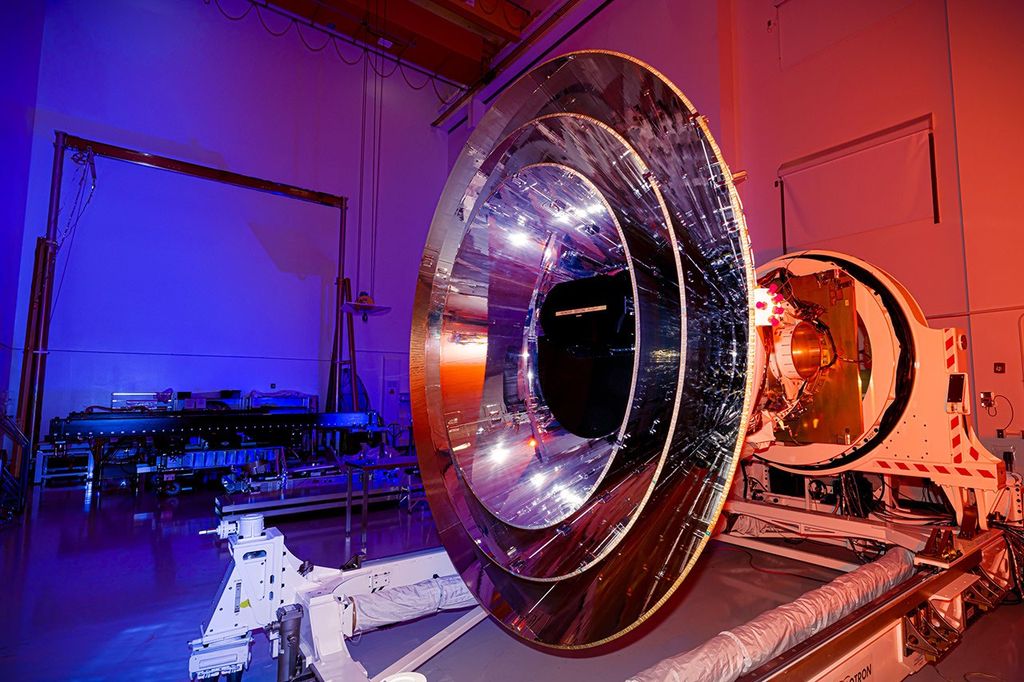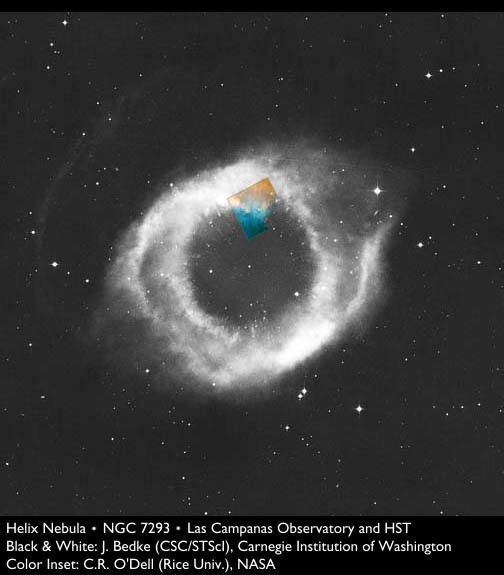1 min read
Collision of Gases Near a Dying Star in the Helix Nebula

This colorful image from the Hubble Space Telescope shows the collision of two gases near a dying star. Astronomers have dubbed the tadpole-like objects in the upper right-hand corner "cometary knots" because their glowing heads and gossamer tails resemble comets. Although astronomers have seen gaseous knots through ground-based telescopes, they have never seen so many in a single nebula.
Hubble captured thousands of these knots from a doomed star in the Helix nebula, the closest planetary nebula to Earth at 450 light-years away in the constellation Aquarius. Each gaseous head is at least twice the size of our solar system; each tail stretches 100 billion miles, about 1,000 times the Earth's distance to the Sun. The most visible gaseous fragments lie along the inner edge of the star's ring, trillions of miles from the star at its center. The comet-like tails form a radial pattern around the star like the spokes on a wagon wheel. Astronomers have seen the spoke pattern using ground-based telescopes, but Hubble reveals for the first time the sources of these objects.
Astronomers theorize that the gaseous knots are the results of a collision between gases. The doomed star spews the hot gas from its surface, which collides with the cooler gas that it had ejected 10,000 years before. The crash fragments the smooth cloud surrounding the star into smaller, denser finger-like droplets, like dripping paint. Astronomers expect the gaseous knots, each several billion miles across, to eventually dissipate into the cold blackness of interstellar space.
This image was taken in August, 1994 with Hubble's Wide Field Planetary Camera 2. The red light depicts nitrogen emission ([NII] 6584A); green, hydrogen (H-alpha, 6563A); and blue, oxygen (5007A).
About the Object
- R.A. PositionR.A. PositionRight ascension – analogous to longitude – is one component of an object's position.22h 29m 30.0s
- Dec. PositionDec. PositionDeclination – analogous to latitude – is one component of an object's position.-19° 9' 50.0"
- ConstellationConstellationOne of 88 recognized regions of the celestial sphere in which the object appears.Aquarius
- DistanceDistanceThe physical distance from Earth to the astronomical object. Distances within our solar system are usually measured in Astronomical Units (AU). Distances between stars are usually measured in light-years. Interstellar distances can also be measured in parsecs.450 Light Years
About the Data
- InstrumentInstrumentThe science instrument used to produce the data.HST>WFPC2
- Exposure DatesExposure DatesThe date(s) that the telescope made its observations and the total exposure time.August, 1994
- FiltersFiltersThe camera filters that were used in the science observations.500 nm [Oi], 656 nm [H-alpha], and 658 nm [Nii]
- Object NameObject NameA name or catalog number that astronomers use to identify an astronomical object.Helix Nebula, NGC 7293
- Object DescriptionObject DescriptionThe type of astronomical object.Planetary Nebula
- Release DateApril 15, 1996
- Science ReleaseHubble Finds Thousands of Gaseous Fragments Surrounding a Dying Star
- CreditC. Robert O'Dell and Kerry P. Handron (Rice University), NASA

Blue: Oxygen (5007A) Green: Hydrogen (H-alpha, 6563A) Red: Nitrogen ([NII] 6584A)
Related Images & Videos

Comet-Like Knots Around a Dying Star in the Helix Nebula
These gigantic, tadpole-shaped objects are probably the result of a dying star's last gasps. Dubbed "cometary knots" because their glowing heads and gossamer tails resemble comets, the gaseous objects probably were formed during a star's final stages of life. Hubble astronomer...
Share
Details
Claire Andreoli
NASA’s Goddard Space Flight Center
Greenbelt, Maryland
claire.andreoli@nasa.gov






